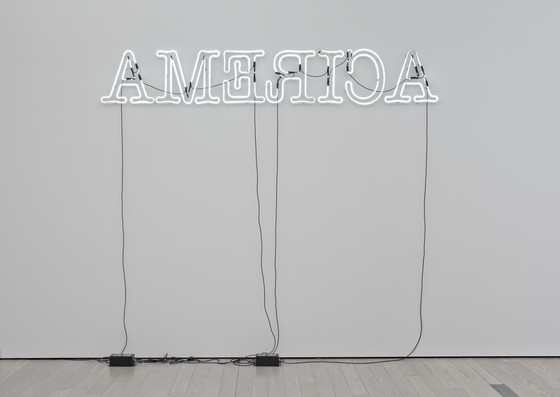Over the last three decades, Glenn Ligon has produced a substantial body of work engaged, as one critic has succinctly noted, with the "presence of the past in the present." Ligon draws from the aesth...
Over the last three decades, Glenn Ligon has produced a substantial body of work engaged, as one critic has succinctly noted, with the "presence of the past in the present." Ligon draws from the aesthetic language and formalism of minimalism and the textual and philosophical modes of conceptual art, and enriches this all through his formative engagement with the modes of cultural studies and critical theory that have gained prominence since the 1980s.
Although he initially started as an abstract painter influenced by Franz Kline, Willem de Kooning, and Clyfford Still, Ligon's major breakthrough as an artist came through an embrace of language. Citing various initial influences from Zora Neale Hurston to James Baldwin, Ligon has consistently used text, sourced from literature, in his oeuvre. He likens his appropriative strategies to the translation or adaptation of an original source with an enduring interest in reflecting the "structures and desires" that inform his selection as well as a viewer's reaction to the text. As critic Malik Gaines notes, Ligon's text serves as both content and form.
Rügenfigur is one of a recent body of neon works entitled America. The German title translates as the repudiation of (or by) the figure. In particular, Ligon had in mind Caspar David Freidrich's painting The Wanderer above the Mist (1817-18), in which the lone figure elides the gaze of the viewer and is turned to face a grand vista from a mountaintop. Ligon's neon sign spells out the word "America," but each letter has been inverted - like Friedrich's wanderer, its back turned to the viewer - producing an elision of meaning and signification. Technically, Ligon has also exposed the hardware and circuitry of the electrified sign as well as the black painted backing with its hidden inner light. Thus, Ligon takes advantage of the metaphoric potentials in this inversion creating light works that, as art historian Richard Meyer has described, are "high impact, entirely unexpected yet exquisitely plugged in to both the historical past and present."
Ligon cites Charles Dickens' famous opening passage from A Tale of Two Cities ("It was the best of times, it was the worst of times..."), full of paradoxes and a somewhat apocalyptic appraisal of its setting, as the source for his America series. At once, this expansive neon courier-font A-M-ER- I-C-A in-verso conjures what Ligon describes as the "somewhat troubling" moment in our country's identity. Consistently incorporating and addressing the body- whether his own body, the black body, the homosexual body, the American body, the artist body, or various combinations therein - Ligon's works in painting, drawing, sculpture, photography, video, installation, and mixed media are among the most rigorous, iconic, timely, and beautiful images of the past few decades.
Ligon is one of the most celebrated artists of his generation. LACMA recently acquired a film by Ligon, The Death of Tom, however this work by the artist in neon also adds a new layer to the consideration of Californian Light and Space artists in LACMA's collection, and speaks to other neon sculptures by artists such as Bruce Nauman, Dan Flavin, and Jack Pierson.
(Franklin Sirmans, Terri and Michael Smooke Curator and Department Head, Contemporary Art - 2010)
More...
